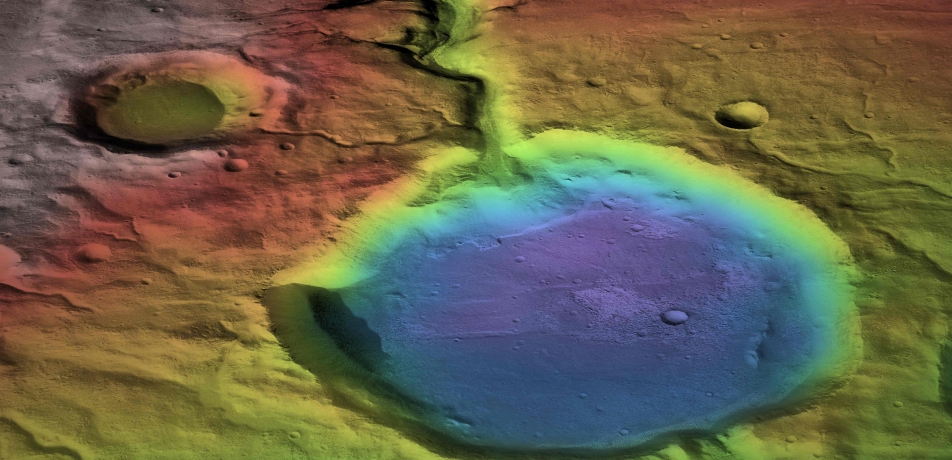Martian fire and ice
Briefs

The geography of Mars continues to be a puzzle: The most recent models show that the Red Planet has probably always been an icy cold place. But the geographical features on its surface suggest that liquid water once flowed there.
Dr. Itay Halevy of the Department of Earth and Planetary Sciences has now shown how the ice could have melted for short periods in the planet’s history, producing a sort of “Martian spring.” That spring, however, would have been anything but mild: The warming would have been the result of violent volcanic activity. Eruptions of such now-dormant volcanoes as Olympus Mons, the largest volcano in the Solar System, may have been hundreds of times the force of the average eruption on Earth - and may have lasted up to a decade. From what we know of Earthly eruptions, the quantity of gases spewed must have been enormous.
Dr. Halevy and his colleagues assessed these amounts and created a simulation of the way that those sulfurous gases would have interacted with the dusty Martian atmosphere. Sulfur can warm as a greenhouse gas or cool by forming particles that shade the surface from the Sun’s rays. According to their calculations, the warming effects would have outweighed the added cooling, heating the surface just enough to allow water to flow at low latitudes - for dozens to hundreds of years at a time. It is during these repeated “brief” - in planetary terms - but intense wet periods that the surface of the planet was carved by flowing rivers and streams.
Dr. Itay Halevy’s reseach is supported by the Helen Kimmel Center for Planetary Science; the Deloro Institute for Advanced Research in Space and Optics; and the Wolfson Family Charitable Trust. Dr. Halevy is the incumbent of the Anna and Maurice Boukstein Career Development Chair in Perpetuity.
http://www.weizmann.ac.il/EPS/People/ItayHalevy

Dr. Itay Halevy







